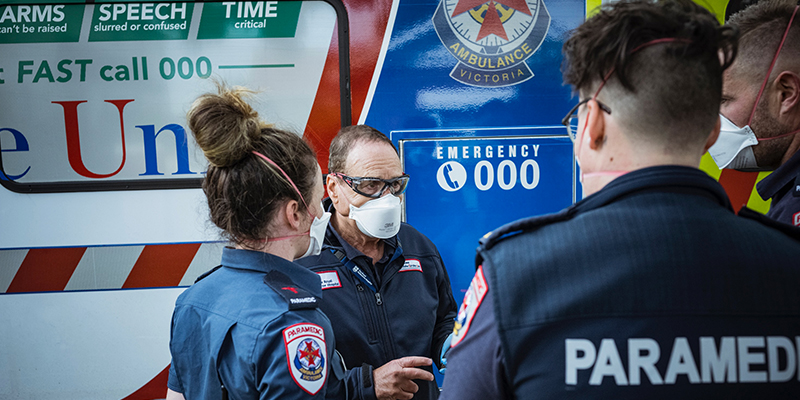Time saved is a brain saved: Five years on the road for Australia’s only Mobile Stroke Unit
December 9, 2022 | in News
The first of its kind to hit the road in Australia, Melbourne’s highly successful Mobile Stroke Unit (MSU) has treated thousands of patients, changing the outcomes of many lives.
The MSU is a purpose-built, 5.3-tonne ambulance with a CT scanner capable of imaging a patient’s brain to detect the type of stroke they are having. This means assessment and treatment can begin immediately, rather than after they arrive at hospital.

The MSU, a joint venture between the Royal Melbourne Hospital (RMH), the University of Melbourne and Ambulance Victoria (AV), has treated 2,735 patients since 2017, with 55 per cent of patients being diagnosed with a stroke or mini-stroke.
Patients like 83-year-old Tony Gould are forever grateful for the quick work of our “hospital on wheels”.
For Tony, it was a regular day with a visit to his local café, when he noticed his right arm had gone numb and couldn’t move his hand. The café staff quickly called Triple Zero (000), and the MSU were dispatched due to the nature of his symptoms.
After his assessment, he was given clot-busting treatment, which relieved his symptoms instantly.
Anthony, a Doctor of Music and pianist, left hospital within two days with no disability or side effects.
After meeting the crew that saved his life, he was speechless and very humbled, “thank you all so much, you not only saved my life but also my career and my passion, I am so grateful,” he said.

The specialist ambulance is equipped with a team consisting of two paramedics, a neurologist, a radiographer and a stroke nurse.
The RMH’s Director of the Melbourne Brain Centre, Professor Stephen Davis AO, said patients identified on the MSU as requiring more extensive treatments, are transported to specific specialist centres. This has saved the health system $270,000 in reduced hospital bypasses since the venture began.
“When it comes to stroke, every minute counts and the MSU has demonstrated in its five years how invaluable the time to treatment is, seeing patients walk out of hospital after only a few days following a major stroke is extraordinary,” Prof Davis said.
Senior team manager of the MSU for AV, Leigh Branagan explains how time saved is a brain saved.
“Thanks to the Mobile Stroke Unit, patients receiving time-critical clot-dissolving treatment within the first hour after symptoms – the ‘stroke golden hour’ – increased 12-fold from 1.5 per cent to 18 per cent,” Mr Branagan said.
For more information about the Mobile Stroke Unit: https://www.thermh.org.au/health-professionals/clinical-services/neurology-and-stroke/mobile-stroke-unit
